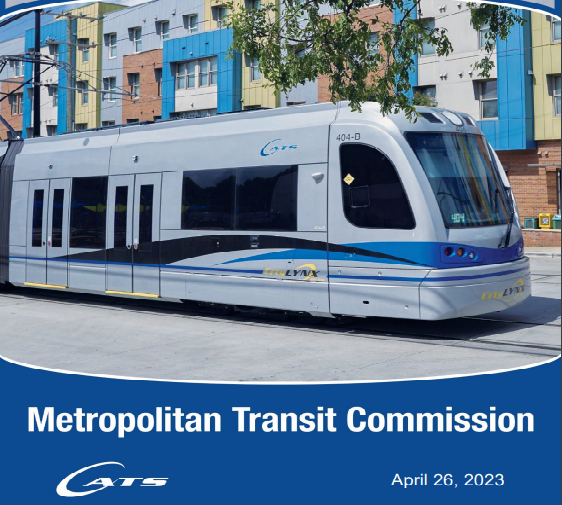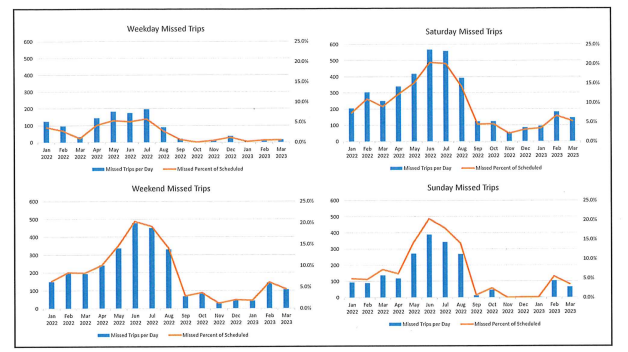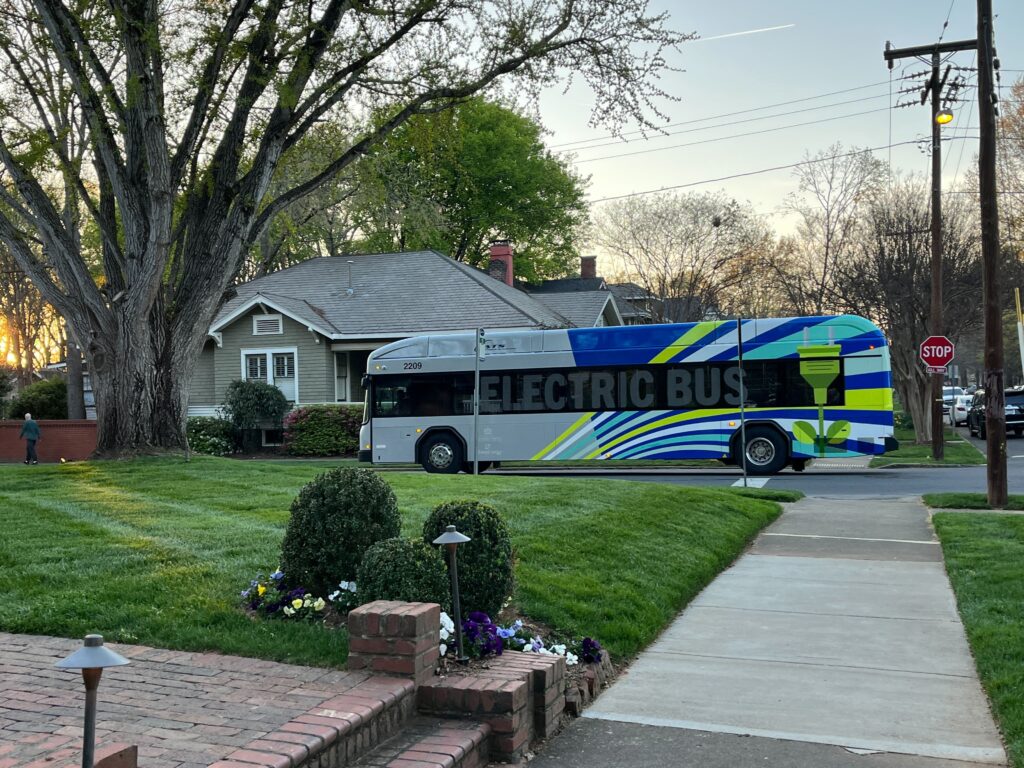Our take on the latest Metropolitan Transit Commission meeting

Photo: Charlotte Area Transit System
On Wednesday, April 26, the Metropolitan Transit Commission (MTC) held an eventful meeting. The MTC, established through an interlocal agreement in 1998 when the half-cent transit sales tax was enacted, is tasked with serving as part of the governance structure that oversees CATS. The MTC votes on CATS policy decisions and has some specific powers, such as the ability to terminate the CATS CEO. However, it became clear during the recent meeting that the MTC is quite limited in its ability to direct financial decisions. As such, commission members are struggling to find their place in our complex transit governance landscape.
These concerns need to be addressed so that all taxpayers supporting CATS through sales tax revenues are equitably represented in both policy and financial decision-making. This is an essential step in the process of building countywide and regional consensus on the need to invest in expanding the public transit system.
Wednesday’s 4-hour meeting covered topics from NCDOT’s oversight role to existential questions about the purpose of MTC. We won’t go into those details here, but we do recommend these articles by WFAE and the Charlotte Post for overviews of the meeting.
Here is our take on the two items that will immediately affect transit riders, operators, and advocates (light rail safety and service levels) and an update on battery electric buses.
Light rail safety
A representative of NCDOT’s State Safety Oversight (SSO) program joined the MTC meeting and answered questions about the department’s involvement with CATS since a LYNX Blue Line derailment occurred in May 2022. The representative assured commission members that NCDOT has accepted CATS’ most recent proposed corrective action plans. These plans address the numerous issues that have come to light in the past few months, most notably safety concerns surrounding the derailment.
CATS is in regular communication with the NCDOT SSO staff and sends weekly reports on rail vehicles and status updates on the corrective action plans. They also coordinate with CATS monthly to discuss safety items and conduct quarterly intensive analyses of ongoing efforts. NCDOT still has the power to intervene or submit a directive to CATS if staff deviate from the plans or if new issues emerge. Both CATS and NCDOT agree that communication between the two organizations is much improved and moving in the right direction.
Bottom line: State transportation officials confirmed that the light rail is safe to use and corrective actions are being taken.
Service levels
CATS staff gave several updates on rail and bus service levels. You can view the presentation slides starting on page 433 of the meeting agenda. Here are the highlights from the past 6 months:
- 1-2% of trips are missed on weekdays.
- Up to 20% of trips are missed on weekends, particularly on Saturdays.
- Weekend missed trips are attributed to unscheduled absences of operators.
- CATS temporarily cut service by 20% in August 2022 due to an unacceptably high percentage of missed trips.
- CATS has not been able to reach a comfortable level of operators to restore service from the August 2022 cuts.
- CATS recommends making service cuts permanent to “ensure improved service reliability”.
- Once operator numbers have improved, CATS intends to bring service back to 100%.
- CATS proposes trimming Gold Line service by one hour in the morning and two hours in the evening to reduce the workload on operators.
We are troubled that CATS is considering permanent service cuts. We agree that recruitment and retention are crucial to a reliable transit service, but with every reduced route transit riders lose a little more trust in the system. When a bus that used to come every 15 minutes now only comes every 30 minutes, transfers between routes become much more challenging and riders face significantly longer overall trip times that may limit their access to jobs and daily destinations.
We have several questions. What is being done to hire more operators? What incentives, if any, are being offered to recruit and retain quality operators? What can be done to ensure there are enough operators on the weekends?
Bottom line: CATS is struggling to hire operators and is considering permanent service cuts.

Image: MTC April 26, 2023 meeting agenda
Battery electric bus update
CATS interim CEO Brent Cagle mentioned briefly a few stark differences between traditional diesel buses and battery electric buses (BEBs). Traditional diesel buses have a range of about 300 miles and take 15 minutes to fuel. BEBs have a range of 150 miles and take 3-6 hours to charge. CATS is slightly more than halfway through its 18-month BEB pilot of 18 vehicles.
About 70% of current CATS bus routes are 150 miles or less, and we expect to see battery technology improve and increase range in the coming years. CATS has learned from the pilot that approximately 75% of their bus routes can be effectively served with BEBs. In the meantime, CATS will need to carefully plan how they operate their bus routes and charge vehicles as more BEBs enter the fleet. We are confident that it is possible to transition to a fully electric bus fleet without having to cut or drastically change existing routes. We encourage CATS staff to rise to this challenge and move the city towards our adopted climate and mobility goals.

Photo: Hope Wright
Learn more
Watch the full MTC meeting here.
Read through the agenda here.
Thanks for reading!
As a nonprofit, community support is essential for us to keep doing what we do — including providing free articles like this. If you found this article helpful, please consider supporting Sustain Charlotte.
Want to stay in the loop? Subscribe to our weekly newsletter and follow us on Instagram, Facebook, and Twitter.
